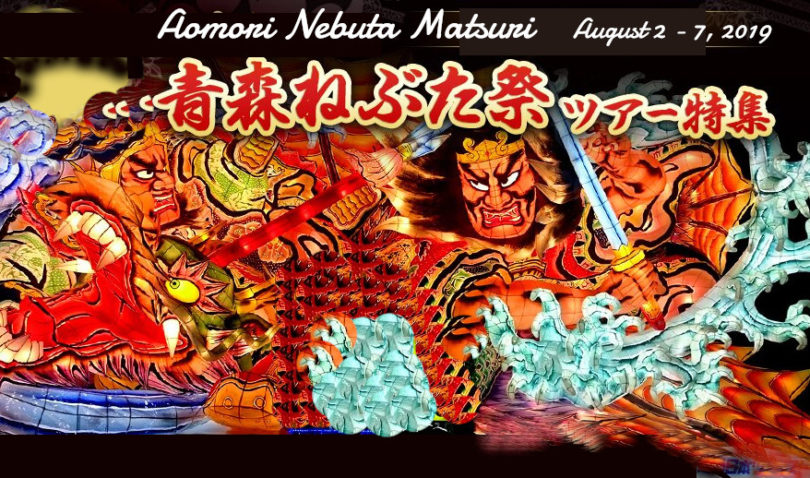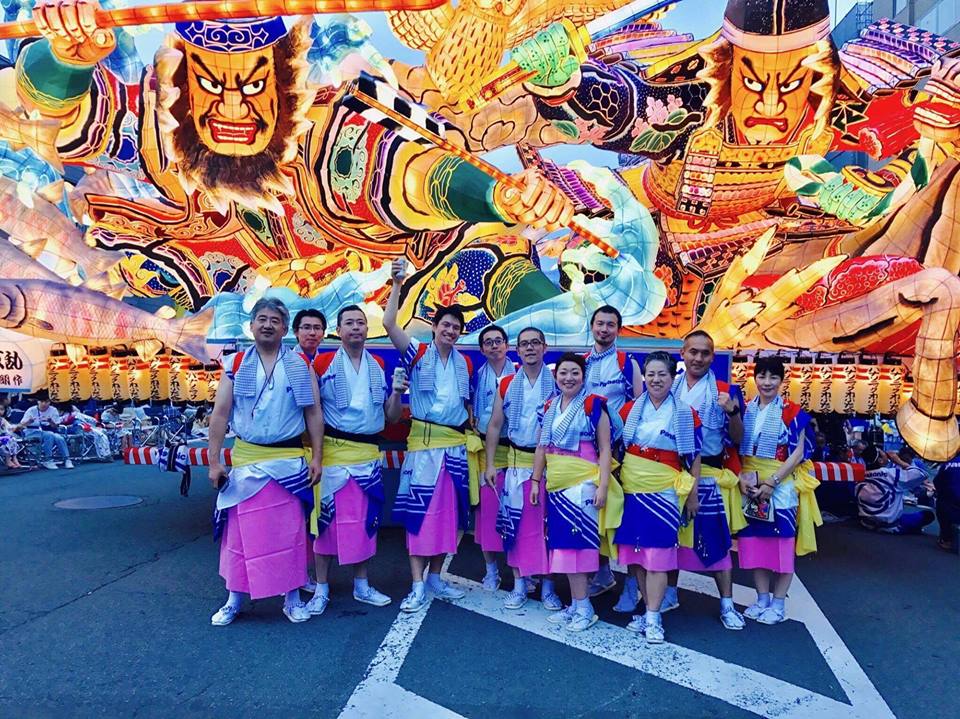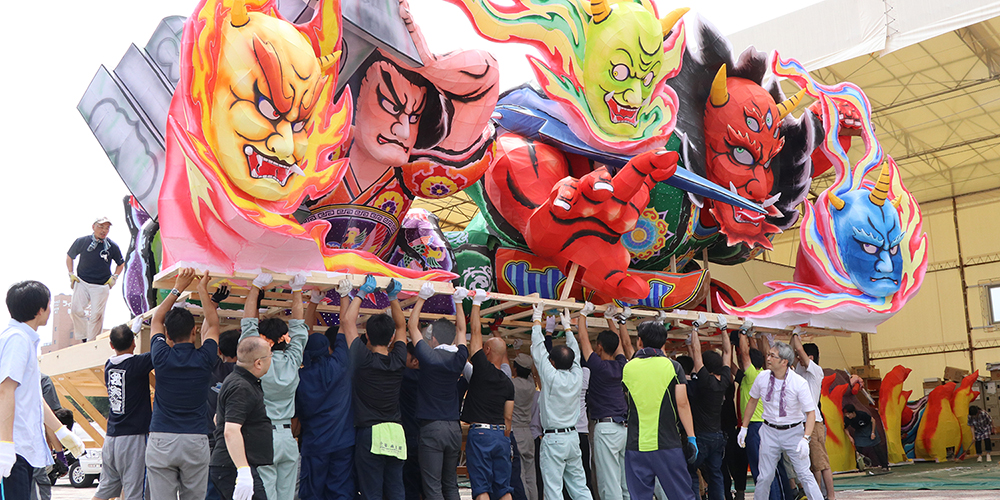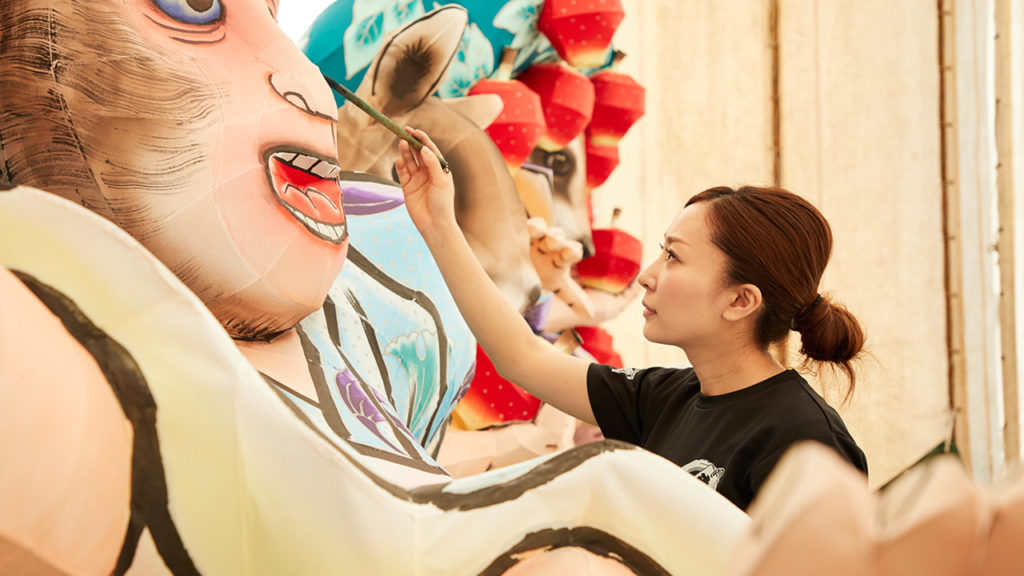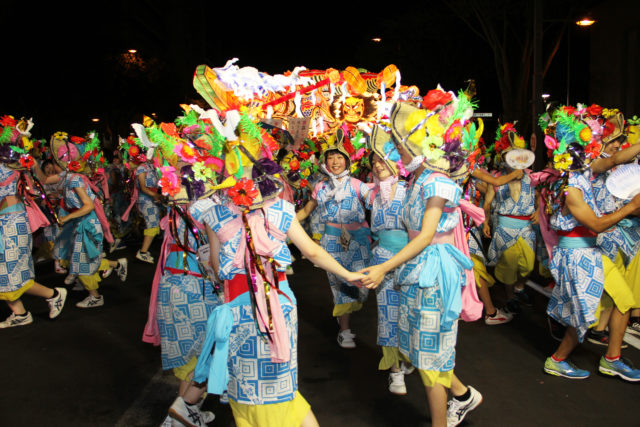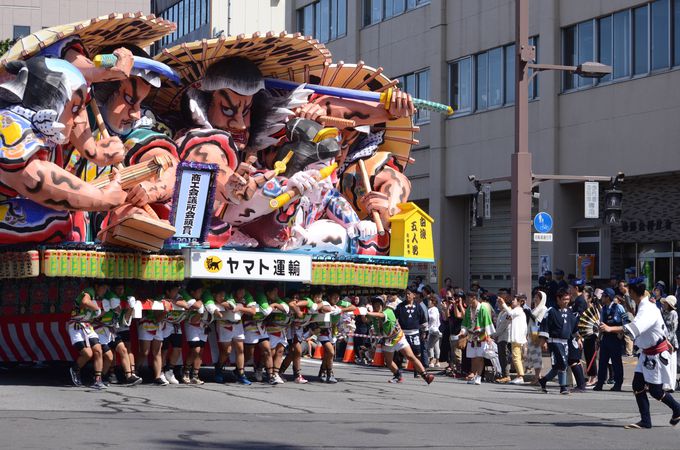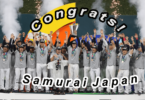Aomori Nebuta Matsuri (Festival) is a Japanese summer annual festival that takes place in Aomori, Aomori Prefecture.
Good evening, everyone how are you? Tonight I’d like to report you how impressive Nebuta Matsuri has just given us before I forgot its splendor of the festival tonight.
The festival which is referred to as one of “Cool Japan” and it is held from August 2 to 7 every year, the eve of the festival on August 1, and stunning fireworks on the evening of 7 of the final day, with more than 2 million tourists visiting each year.
Besides it is counted among the three largest festivals in the Tōhoku (Northern part) region. It was designated an Important Intangible Folk Cultural Property in 1980, and as one of the 100 Soundscapes of Japan by the Ministry of the Environment in 1996.
The cost of holding of Nebuta Festival is about 220 million yen (approx US$220million). It was designated as an important intangible folk cultural property of the country in 1980.
What’sAomori Nebuta Matsuri (festival)?
“Nebuta” refers to the float of a brave warrior-figure which is carried through the center of the city, while dancers wearing a unique type of costume called haneto dance around in time with the chant Rasserā (shorten dialectal version of “irasshai“, calling visitors and customers to watch or join).
In the local dialect, participation in the festival is inquired using the verb haneru (bounce) , “Are you going to haneru(bounce) today?”, which was derived from the Japanese spelling of the haneto costume and the verb haneru .
There are many stories or legends about the festival but the most widely known explanation is that it originated from the flutes and taiko future shōgun Sakanoue no Tamuramaro used to attract the attention of the enemy during a battle in Mutsu Province (Tohoku region).
The Tamuramaro Shō (Tamuramaro Prize) was created around this explanation in 1962 to be awarded to the festival’s best group participant (later renamed to the Nebuta Taishō).
During the Edo period and Meiji period, the act of carrying a large lantern float like the Nebuta was often banned by the government due to the potential fire hazard it posed to the surroundings.
This ban was also put into place during World War II, but was lifted in 1944 as an effort to boost morale during the waning years of the war.
Corporations began to sponsor the creation of the floats in the post-war period, and a strong emphasis was placed in expanding local tourism through the festival.
The light source within the float was originally a candle, but was eventually changed to incandescent or fluorescent light bulbs powered by portable generators and rechargeable batteries.
The frame of the floats also changed from bamboo to wire, lowering the risk of fire considerably.
Nebuta floats also grew larger with time, but urban obstacles such as footbridges, power lines, and traffic lights only allowed their width to increase significantly.
The floats often feature images of kabuki actors, various types of gods, and historical or mythical figures from Japanese or Chinese culture, but modern Nebuta floats may also feature famous regional personalities or characters from television shows (especially the annual historical “Taiga drama” aired by NHK).
Each processional group individually organizes the basic elements of the nebuta, such as processional order, creation of floats, and marching-band musicians.
Other important factors include the children who pull the floats with ropes (in most cases, the floats are carried along by other men, and the children are just there for show), and the haneto dancers.
Anyone, including tourists, can participate in any of the processions as a haneto as long as they are wearing the proper costume.
The costumes are sold in supermarkets and department stores all across the prefecture, and a full set (excluding the flower hat) can be purchased for around 5000 yen.
Costumes can also be rented at some places along the processional route.
The best processional group is awarded the Heisei (heisei year) where the year number is placed after “Heisei”. This award was first created as the Tamuramaro Award in 1962, but was changed to its current name in 1995 because people thought it odd to have Sakanoue no Tamuramaro’s name in the award (Tamuramaro is perceived as a ruthless conqueror by the Tōhoku people).
The floats from the Aomori Nebuta were taken to the Hakodate Ika Odori festival in 2007.
This was done as part of a friendship agreement between the two cities, and the Ika Odori led the float procession on the final day of the festival during the previous year’s festival (August 7, 2006).
The floats have also been invited every year to Shibuya, Tokyo, where the festival has taken place annually in September since 2005.
Other nebuta festivals take place in over 30 other villages and cities across Aomori Prefecture. The largest of these are the festivals in Hirosaki, Goshogawara, Kuroishi, and Mutsu.
There are also many instances across Japan where the nebuta floats are included as part of a larger festival.
The nebuta also made its way to Seoul, South Korea for the first time in September, 2005, and to the United States in August, 2007, 2009 and 2010, as part of Nisei Week in Little Tokyo, Los Angeles, California.
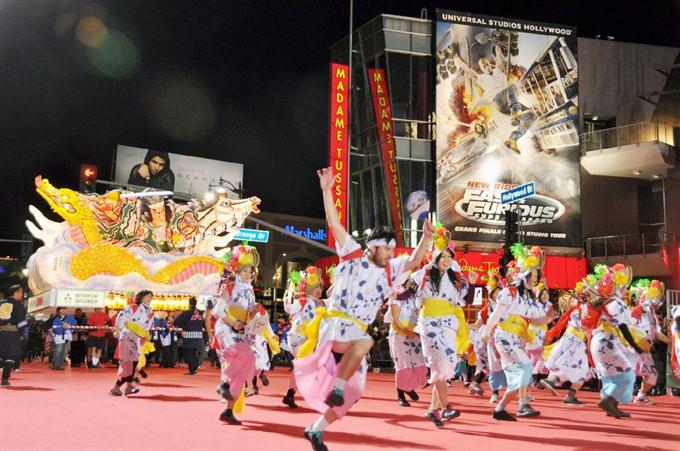
Los Angeles, Nebuta, the final float of Nisei Week parade
In closing, why don’t you participate the event and have fun!
Here’s moving images,

